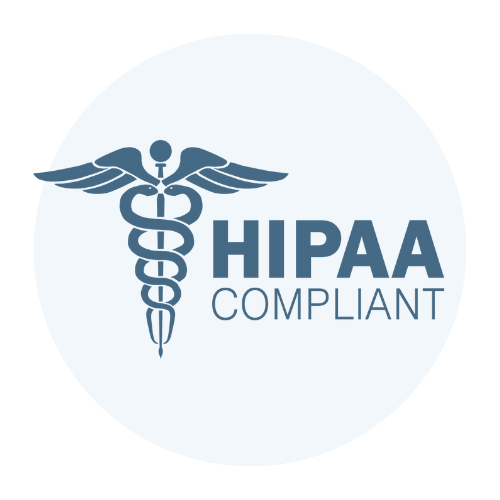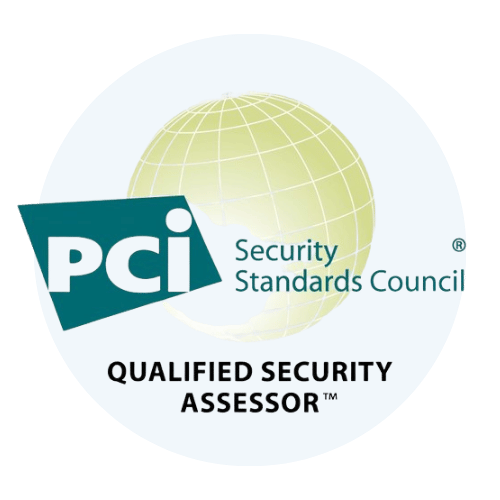The Importance of Third-Party Risk Assessments
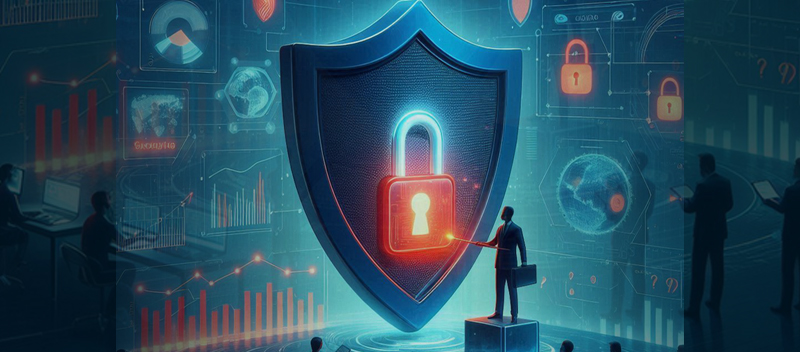
TL;DR Third-party risk assessments are essential for modern organizations that rely on vendors, suppliers, and service providers. These assessments help identify and manage risks related to cybersecurity, compliance, privacy, operations, and reputation. By conducting assessments throughout the vendor lifecycle, businesses can strengthen resilience, avoid costly disruptions, and ensure regulatory compliance. Third-party risk assessments are vital for modern organizations. As businesses rely more on vendors, suppliers, and service providers, the risks, ranging from data breaches to operational disruptions, continue to grow. In fact, 62% of organizations reported experiencing supply chain disruptions related to cybersecurity, marking a 13% rise from 2023. This highlights the growing challenge of managing third-party and supply chain risks. (Source: Hyperproof, 2024 Benchmark Report) In this article, we will explain why third-party risk assessments are critical, the steps to take, and the solutions available to manage vendor risk effectively. What is a Third-Party Risk Assessment? A third-party risk assessment evaluates the potential risks associated with vendors, suppliers, and service providers across the supply chain. It helps organizations identify vulnerabilities and protect themselves from various threats. Key types of risks assessed include: Cybersecurity: Evaluating vulnerabilities that could lead to data breaches or other cyber incidents. Privacy: Ensuring compliance with privacy regulations and safeguarding sensitive data. Compliance: Assessing whether third parties meet industry regulations and standards. Operational: Identifying disruptions in the supply chain or business operations. Financial: Evaluating the financial health and stability of third parties. ESG (Environmental, Social, and Governance): Assessing a third party’s alignment with environmental and social governance standards. Reputational: Determining potential harm to an organization’s reputation due to third-party failures or misconduct. Third-party risk assessments are not one-time tasks; they occur at various stages of the relationship, including: Onboarding: Conducted before establishing a partnership to assess initial risks. Periodic reviews: Ongoing evaluations to ensure that risks remain manageable over time. During incidents: Reassessing risks when security or operational incidents occur. Offboarding: Performed when ending a relationship to mitigate lingering risks. Struggling to Stay Ahead of Third-Party Risks? TrustNet helps you assess, monitor, and reduce vendor risk with powerful automation and expert guidance. Talk to an Expert Why Are Third-Party Risk Assessments Essential? Unmanaged third-party risks can lead to severe consequences, including data breaches, regulatory penalties, business interruptions, and reputational damage. High-profile incidents underscore the importance of proactive assessments.For instance: Marks & Spencer (M&S): Hackers exploited third-party IT helpdesk vulnerabilities at M&S and Co-op by impersonating employees and convincing helpdesk staff to reset passwords, granting them unauthorized network access. The attack on M&S led to significant operational disruptions, including halting online clothing and home orders, food supply issues, and an estimated financial loss of £30 million ($40 million), with costs still mounting weekly. (Source: Reuters) Co-op: Meanwhile, Co-op faced data breaches affecting up to 20 million individuals and disruptions to contactless payments, resulting in delayed deliveries and reputational damage. (Source: Reuters) Third-party risk assessments strengthen organizational resilience by: Identifying and mitigating cybersecurity vulnerabilities. Ensuring compliance with regulations such as ISO, HIPAA, PCI DSS, and NIST. Enabling informed decision-making regarding vendor relationships. By conducting thorough assessments during onboarding, periodically, during incidents, and at offboarding, organizations can proactively manage risks associated with vendors, suppliers, and service providers. Categories and Frameworks for Third-Party Risk Effective third-party risk management begins with understanding the types of risks and the frameworks that guide their assessment. Key Risk Categories Profiled Risk: External factors such as geopolitical instability, economic conditions, or natural disasters that can impact a vendor’s operations. Inherent Risk: The level of risk present in a vendor relationship before implementing any controls. This includes risks related to the nature of services provided, data sensitivity, and access levels. Residual Risk: The remaining risk after applying mitigation strategies and controls. It reflects the effectiveness of the implemented measures. Understanding these categories helps organizations prioritize resources and tailor risk management strategies accordingly. Frameworks Guiding Third-Party Risk Management Several established frameworks provide structured approaches to assess and manage third-party risks: NIST Cybersecurity Framework (CSF) The updated NIST CSF v2.0 introduces the Govern function, enhancing third-party risk management by prioritizing governance and accountability. Here’s how it integrates with third-party considerations: Govern: Establish clear policies, roles, and oversight mechanisms for third-party relationships to ensure alignment with organizational security goals. Identify: Recognize critical third-party dependencies and map associated risks. Protect: Implement safeguards like encryption and access controls for third-party systems. Detect: Strengthen monitoring to identify suspicious activity across third-party environments. Respond: Define incident management processes tailored to third-party breaches. Recover: Prepare recovery strategies to address disruptions involving partners or vendors. ISO/IEC 27001 ISO/IEC 27001 supports managing third-party risks within an Information Security Management System (ISMS), offering: Risk Assessments: Systematically evaluate risks tied to vendors. Contractual Requirements: Enforce security standards in vendor agreements. Audits: Regularly check vendors for compliance. Incident Management: Collaborate with third parties during security events. PCI DSS PCI DSS addresses third-party risks specifically for payment environments by requiring: Vendor Compliance: Ensure third parties adhere to PCI standards. Data Security: Protect payment data across shared systems. Access Limitations: Restrict third-party access to sensitive environments. Periodic Evaluations: Reassess vendor security practices regularly. These frameworks assist in establishing robust third-party risk management programs by providing best practices and compliance requirements. Tailoring Assessments to Vendor Criticality Not all vendors pose the same level of risk. Assessments should consider: Data Access: The type and sensitivity of data the vendor can access. Business Impact: The potential effect on operations if the vendor fails to deliver services. Regulatory Requirements: Compliance obligations specific to the vendor’s services. Organizations can efficiently allocate resources and enhance their risk posture by aligning assessment depth with vendor criticality. Steps and Best Practices for Effective Third-Party Risk Assessment Assemble Cross-Functional Stakeholders Engage teams from IT, procurement, legal, compliance, and security to ensure comprehensive oversight. This collaborative approach facilitates a holistic understanding of vendor risks and promotes unified decision-making. Define Acceptable Residual Risk Establish clear risk tolerance thresholds before onboarding vendors. By determining what level of residual risk is acceptable, organizations can make informed decisions about vendor engagements and necessary mitigation strategies. Standardize the Assessment Process Implement a consistent assessment framework
Understanding the Shared Responsibility Model in Cloud Security

TL;DR Cloud security is a shared responsibility between you and your cloud service provider (CSP). Misunderstanding this model can lead to data exposure, security gaps, and costly compliance failures. Learn the division of responsibilities for IaaS, PaaS, and SaaS, and take action to strengthen your cloud security posture through proper practices and ongoing training. Cloud security isn’t just your provider’s job; it’s a shared responsibility. The shared responsibility model clearly defines which security tasks are handled by cloud service providers (CSPs) and which are owned by you, the customer. Misunderstanding this model can lead to serious consequences, including: Exposed cloud data due to misconfigured settings Cloud web security gaps from assumed protections Costly compliance failures and reputational damage As more businesses shift to cloud environments, it’s critical for IT leaders, CISOs, and decision-makers to understand where their responsibilities begin and end. This article breaks down the shared responsibility model, dispels common misconceptions, and outlines how your organization can: Strengthen its cloud security posture Choose the right cloud security solutions Reduce risk across cloud environments Understanding your role is step one. Acting on it is what protects your business. What is the Shared Responsibility Model? In cloud security, the Shared Responsibility Model defines how security and compliance duties are split between CSPs and their customers. This framework is crucial for avoiding gaps that lead to data breaches or compliance failures. Two Sides of Responsibility CSPs handle the security of the cloud. They secure: Physical data centers Hardware and networking infrastructure Virtualization layers and foundational services Core cloud network security controls Customers are responsible for security in the cloud. They manage: Data encryption and classification Identity and access management (IAM) Application-layer controls and settings Security configurations for services and workloads Understanding where your responsibilities start and end ensures you implement the right cloud security solutions and avoid critical missteps. Looking to strengthen your cloud security posture? TrustNet’s cloud security services help you identify risks, streamline compliance, and implement effective controls tailored to your cloud environment. Talk to an Expert Division of Responsibilities by Cloud Service Model The shared responsibility model adapts depending on the type of cloud service you use: Infrastructure as a Service (IaaS), Platform as a Service (PaaS), or Software as a Service (SaaS). IaaS CSP Secures: Physical infrastructure, storage, compute, and virtualization layer. Customer Manages: Operating systems, network configurations, applications, identity and access management (IAM), and data security in cloud computing. Key Action: Harden VMs, patch OS, configure firewalls, and monitor workloads. As customers have direct control over the virtual environment, failing to secure these elements leaves critical attack surfaces exposed. PaaS CSP Manages: Infrastructure, operating system, middleware, and runtime. Customer Secures: Application code, user access, and cloud computing data security. Key Action: Implement secure code practices, encrypt sensitive data, and enforce access controls. As attackers increasingly target app-layer vulnerabilities and mismanaged access, your code and user access are your front line. SaaS CSP Handles: Everything from infrastructure to application management. Customer Still Owns: Data security, user provisioning, and compliance with internal and regulatory policies. Key Action: Control user access, configure security settings, and monitor data sharing. Even in SaaS, misconfigured permissions and shadow IT can lead to breaches and non-compliance. Complexity in Hybrid and Multi-Cloud Environments Modern organizations often mix IaaS, PaaS, and SaaS across multiple providers, which multiplies the challenge. Add cloud access security brokers (CASBs) into the stack, and responsibilities become even more fragmented. To stay secure, teams must: Maintain consistent security policies across environments. Use CASBs for visibility and policy enforcement. Ensure every role knows its responsibilities, especially in shared or ambiguous zones like compliance and configuration. Common Misconceptions and Pitfalls Despite the clarity of the shared responsibility model, many organizations mistakenly believe that CSPs handle all aspects of cloud security. This misunderstanding can lead to serious breaches and security vulnerabilities. Key Fact: According to studies, only 13% of organizations fully understand their responsibilities in cloud security. Key Consequence: Gartner predicted that by 2025, a staggering 95% of cloud security failures are caused by customer errors, not CSP shortcomings. Common Pitfalls: Misconfigured Storage Buckets: Leaving data exposed or accessible to unauthorized users. / Weak Access Controls: Insufficient user authentication or overly broad access permissions. Lack of Encryption: Storing sensitive data without encryption increases the risk of data leaks. These mistakes stem from a lack of clarity and awareness, highlighting the importance of ongoing education and cloud security certification for IT teams. Best Practices for Fulfilling Your Responsibilities Your organization must adopt best practices that ensure proper protection of its data, systems, and applications. Here are key strategies: Review SLAs and Contracts: Ensure that Service Level Agreements (SLAs) and contracts clearly define the security roles and responsibilities of each cloud provider. Understand how these vary across different cloud service models (IaaS, PaaS, SaaS). Prioritize Data Security: Always encrypt data both at rest and in transit. Implement strong access controls and regularly audit permissions to prevent unauthorized access. Identity and Access Management (IAM): Define and enforce least-privilege access policies. Limit access to sensitive data and applications based on user roles and responsibilities. Embrace DevSecOps: Integrate security directly into the development pipeline. Automate security testing to catch vulnerabilities early and ensure that security is part of the continuous delivery process. Leverage Cloud-Native Security Tools: Use both CSPs’ built-in security tools and third-party solutions to enhance monitoring, threat detection, and compliance efforts. Continuous Training: Invest in cloud security certification and provide regular training to your security teams. Keeping your team updated on the latest cloud-native security practices is essential for staying ahead of threats. By following these best practices, you will strengthen your cloud security posture and minimize risks while fulfilling your responsibilities in the shared security model. How to Evaluate Cloud Security Solutions & Providers Use these key criteria to make an informed decision when evaluating cloud security solutions and providers: — Transparency in Shared Responsibility: Ensure the provider clearly defines their security obligations versus the customer’s. — Robust Documentation: Look for comprehensive documentation that outlines security policies, procedures, and practices. — Security Certifications: Verify certifications like ISO 27001, SOC 2, and others that prove the
Cybersecurity Trends to Watch: Insights from RSAC 2025
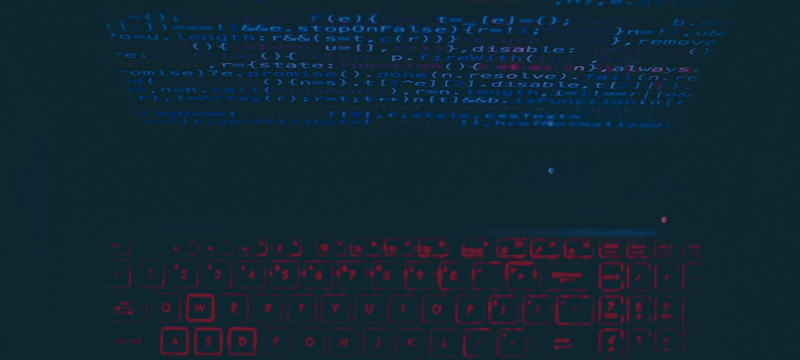
RSAC 2025 highlighted the key cybersecurity trends for 2025: AI’s critical role in both defense and attack, the rise of identity management and Zero Trust, integrated security solutions, regulatory shifts, and ongoing product innovation. Organizations must adapt by investing in AI-driven tools, enhancing identity security, and proactively aligning with evolving regulations. The future of cybersecurity is all about resilience, collaboration, and continuous learning. RSAC 2025, the world’s leading cybersecurity event, gathered nearly 44,000 cybersecurity professionals, vendors, and thought leaders. The event spotlighted urgent challenges and emerging innovations that will redefine cybersecurity. This article outlines the most critical cybersecurity trends from RSAC 2025. It covers real-world advances in AI, identity, and integration, along with the latest shifts in regulation and workforce strategy. Each section includes clear takeaways to help your team adapt and lead. Tracking these cybersecurity trends for 2025 is essential to build resilience and drive smarter security strategies. Here’s what you need to know. 1. AI Takes Center Stage: From Agentic AI to Adversarial Threats AI is the future of cybersecurity, and RSAC 2025 proved it. According to RSAC 2025 session data, more than 40% of sessions focused on AI, a sharp rise from just 5% in 2023. Leaders across the industry emphasized its growing role in both defense and attack. — Agentic AI is reshaping security operations Agentic AI refers to autonomous systems capable of performing tasks and making decisions with minimal human input. In security operations, these AI agents now automate key workflows, from triage to incident response. At RSAC 2025, security teams saw real-world demos where Agentic AI cut response and dwell times by over 40%. Most tools included “human-in-the-loop” controls to ensure accountability and responsible deployment. — Adversarial AI introduces new attack surfaces Threat actors are exploiting AI models with techniques such as: Prompt injection to manipulate LLM outputs Jailbreaking to bypass built-in restrictions Model poisoning to compromise training data This threat category is expanding rapidly. Practical takeaways: Build AI literacy across security teams Deploy vetted AI-powered tools with oversight Conduct red teaming against AI systems Monitor and adapt to new adversarial techniques AI is not optional. It is central to defending against the top cybersecurity trends of 2025. Understanding where the industry is headed is the first step. TrustNet delivers insights, solutions, and guidance to help security leaders stay informed and prepared for what’s next. Talk to an Expert 2. Identity Management and Zero Trust: The New Front Lines Identity took center stage at RSAC 2025. Over 330 sessions focused on identity management, confirming it as one of the most urgent cybersecurity industry trends of 2025. Several key challenges and priorities stood out: Identity-based attacks continue to escalate. Threat actors increasingly target users, credentials, and misconfigured access. Zero Trust adoption is accelerating. Organizations are implementing least-privilege access and micro segmentation to limit lateral movement. Hybrid environments complicate IAM. As companies adopt more cloud services and AI systems, securing identity across environments grows more complex. The RSAC conference 2025 spotlighted modern identity strategies with strong support for: Federated identity frameworks Decentralized identity systems Continuous authentication models Security leaders must shift from perimeter-based defenses to identity-first architectures. Practical takeaways: Modernize your IAM systems and embed Zero Trust into your core architecture. Prioritize visibility, automation, and continuous validation to stay ahead of identity-driven threats. 3. Integration, Collaboration, and the Rise of Platform Security At RSAC 2025, cybersecurity experts emphasized the importance of integrated security solutions. As security stacks become more complex, silos between tools and technologies hinder effective protection. The industry is now moving towards platform-based approaches that streamline security operations. Key points discussed: Collaboration across vendors: Cisco AI Defense integrates with ServiceNow SecOps, demonstrating how cross-vendor collaboration improves incident response. Holistic visibility: Unified platforms reduce silos and provide comprehensive oversight across networks, endpoints, APIs, and cloud environments. Cloud security: As organizations adopt cloud infrastructure more widely, they must ensure seamless integration of security tools across on-premises and cloud environments. Practical takeaways: Evaluate and adopt integrated security platforms that can streamline management, improve visibility, and provide a unified defense against evolving threats. Collaboration between your existing tools and new technologies is key for maintaining strong security at scale. 4. Regulatory Shifts and Policy Futures Also, at RSAC 2025, experts discussed the future of cybersecurity regulation and policy. Key takeaways include: Government’s Growing Role: Governments are increasing their involvement in cybersecurity defense, emphasizing the need for stronger public-private collaboration. Stricter Regulations on AI, Identity, and Supply Chains: Regulators are set to impose stricter rules on AI deployment, identity management, and supply chain security as these areas continue to evolve. Security leaders must actively monitor regulatory changes and ensure their cybersecurity programs align with new requirements. By staying proactive, they can mitigate risks and avoid compliance gaps. Practical takeaways: Continuously monitor regulatory shifts and update your compliance strategies to stay ahead. 5. The Cutting Edge: Product Innovation and Skills Development RSAC 2025 further showcased groundbreaking product innovations that leverage AI, large language models (LLMs), and automation to enhance detection, response, and network defense. Key advancements focused on: AI model and pipeline protection: Securing AI systems from adversarial attacks and ensuring data integrity. API security: Strengthening defenses against API-based vulnerabilities, which are increasingly targeted by attackers. Endpoint and cloud security: Advancing solutions to safeguard critical assets across diverse environments. Additionally, RSAC featured interactive experiences, such as capture-the-flag and AI Cyber City competitions, highlighting the need for continuous skills development. These events stressed that security teams must stay agile and equipped with the latest knowledge and techniques to tackle emerging threats. Practical takeaways: Organizations must invest in next-gen security solutions while prioritizing ongoing workforce development and upskilling to ensure their teams’ resilience. Continuously monitor regulatory shifts and update your compliance strategies to stay ahead. Conclusion & Recommendations RSAC 2025 highlighted key trends shaping the future of cybersecurity: AI’s central role in enhancing security. The rise of identity management and Zero Trust models. Increasing importance of integrated and platform-based security solutions. Regulatory shifts require proactive compliance. Ongoing innovation is driving security products and workforce skills. To stay ahead of evolving threats, organizations
Types of Threats and Vulnerabilities in Cyber Security

As the recent epidemic of data breaches illustrates, no system is immune to attacks. Any company that manages, transmits, stores, or handles data must institute and enforce mechanisms to monitor its cyber environment, identify vulnerabilities, and close security holes as quickly as possible. It’s essential to distinguish between cyber threats and vulnerabilities before identifying specific risks to modern data systems. Cyber threats are security incidents or circumstances that can negatively affect your network or other data management systems. Examples of common security threats include phishing attacks leading to malware infection, a staff member’s failure to follow data protection protocols causing a data breach, or even natural disasters that disrupt your company’s data headquarters. Examples of common security threats include phishing attacks that result in installing malware that infects your data, a staff member’s failure to follow data protection protocols that causes a data breach, or even nature’s forces that take down your company’s data headquarters, disrupting access. Vulnerabilities are the gaps or weaknesses in a system that make threats possible and tempt threat actors to exploit them. Types of vulnerabilities in network security include, but aren’t limited to, SQL injections, server misconfigurations, cross-site scripting, and transmitting sensitive data in a non-encrypted plain text format. When threat probability is multiplied by the potential loss that may result, cybersecurity experts refer to this as a risk. Types of Security Threats In the same way that bacteria and illnesses can invade one’s body, various threats can harm hardware and software systems. Some of the major ones include the following: Viruses are designed to be easily transmitted from one computer or system to another. Often sent as email attachments, viruses corrupt and co-opt data, interfere with your security settings, generate spam, and may even delete content. Computer worms are similar; they spread from one computer to the next by sending themselves to all of the user’s contacts and subsequently to all contacts’ contacts. Trojans are malicious pieces of software that insert themselves into a legitimate program. Often, people voluntarily let trojans into their systems in email messages from a person or an advertiser they trust. Your system becomes vulnerable to malware when the accompanying attachment is open. Bogus security software that tricks users into believing that their system has been infected with a virus. The accompanying security software the threat actor provides to fix the problem causes it. Adware tracks your browsing habits and causes particular advertisements to pop up. Although this is common and often something you may even agree to, adware is sometimes imposed upon you without your consent. Spyware is an intrusion that may steal sensitive data such as passwords and credit card numbers from your internal systems. A Denial of Service (DOS) attack occurs when hackers deluge a website with traffic, making it impossible to access its content. A distributed denial of service (DDOS) attack is more forceful and aggressive since it is initiated from several servers simultaneously. As a result, it is harder to mount defenses against it. Phishing attacks are social engineering infiltrations whose goal is to obtain sensitive data, such as passwords and credit card numbers, incorrectly. The hacker downloads and installs malware via emails or links from trusted companies and financial institutions. SQL injections are network threats that involve using malicious code to infiltrate cyber vulnerabilities in data systems. As a result, data can be stolen, changed, or destroyed. Man-in-the-middle attacks entail a scenario where the communication of two private entities is intercepted and manipulated by a third party. While it is limited to listening, the attacker can also manipulate or alter the information, creating false information and even security risks. Rootkits are tools that allow remote and illegitimate access to computer systems. They can also abuse system resources by introducing malicious software and compromising passwords or other data. For more on our Penetration Testing services Click Here Understanding Network Vulnerabilities Protecting your network systems has become essential in today’s modern business landscape. A simple mistake can cause the most severe disruptions. Key Vulnerabilities to Watch Out For: Outdated Applications: Failing to update, test, and patch applications can expose your network to risks like code injection and cross-site scripting. Security Gaps: Insecure direct object references and similar vulnerabilities open your systems to potential breaches. Why It Matters If these vulnerabilities are not addressed quickly enough, you compromise not only your data but also the integrity of your entire business. Customer trust and business operations will also be at risk without appropriate security precautions. Make these steps a top priority to protect your network from possible attacks and guarantee a safe online environment.
Information Security Plan: What It Is, Why You Need One, and How to Get Started
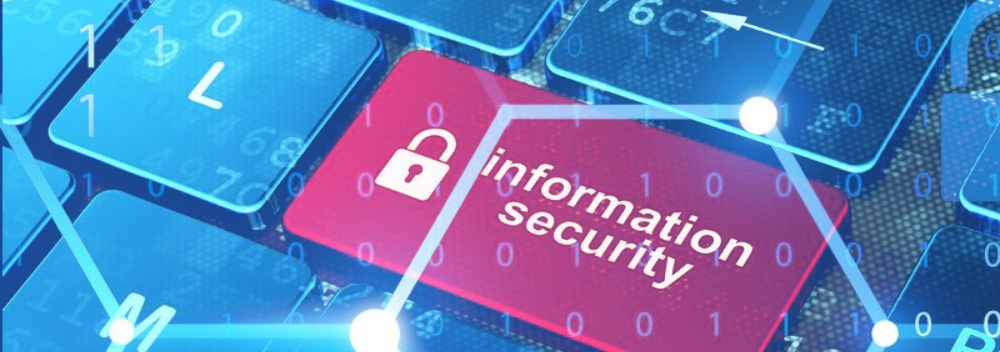
Every organization needs an information security plan because data has become the world’s most valuable commodity. And like all precious things, data is regulated heavily by governing bodies and coveted by everyone – including crooks. That is why cybercrime is on the rise – in step with a tightening compliance landscape. The latest outlook is alarming: the vast majority (83%) of companies will more than likely experience at least one data breach in their lifetime. Just a single intrusion can very well be the final showstopper to many inadequately capitalized businesses. As reported by IBM, the average data breach cost was US.35 million in 2022. (The impact could leave a larger crater in your wallet – around US.44 million – if your business operates in the U.S.) With more organizations getting goosed by cybercrime, the information security market will balloon to around US5 billion by 2024, as forecasted by Statista. Still, malicious hackers account for just a portion of the aggregate risk to data security. Companies need to include natural disasters, human error, system flaws, and a slew of noncompliance penalties in their data protection strategy. There is no feasible way around this dilemma because most businesses today need to process and store data – their own, their vendors, and their customers. And like those old-school institutions, modern businesses must guard their precious currency (i.e., data) as if everything depended on it. The best way to do that is to start with a strong information security plan. What Is Information Security? Information security (often referred to as InfoSec) includes various measures, strategies, and features that are implemented to keep and manage sensitive information. Its primary aim is to control access to information that upholds the CIA triad in data protection (Confidentiality, Integrity, Availability) without significantly hampering business productivity. Here’s how key institutions define information security: “The preservation of confidentiality (ensuring that information is accessible only to those authorized to have access), integrity (safeguarding the accuracy and completeness of information and processing methods), and availability (ensuring that authorized users have access to information and associated assets when required).” – ISO/IEC 27002 “Ensures that within the enterprise, information is protected against disclosure to unauthorized users (confidentiality), improper modification (integrity), and non-access when required (availability)” – ISACA. Click below to see how TrustNet can help you get started. Talk to an Expert What is an Information Security Plan? An information security plan refers to the documented set of policies, objectives, systems, and processes that an organization has established to protect sensitive data. To reduce risks and deal with current threats that can jeopardize a company’s data availability, confidentiality, or integrity, this plan incorporates security measures, authentication techniques, and response processes. Why Do You Need an Information Security Plan? An organization must have an information security plan to participate in the digital economy. The peril such an organization poses extends far beyond its own business into those of its customers, suppliers, and other entities that transact with it. Cybercrime – particularly data breaches – can target complex supply chains where data flow is difficult to track and secure. If you exchange sensitive data with an entity with poor information security measures, threat actors can easily compromise your data. That is why many prudent companies (and almost all investors) require concrete assurances (such as ISO certifications and SOC reports) from vendors, third parties, and potential investees on how well they protect data before going forward with any business. Ultimately, a well-designed information security plan benefits the company on multiple fronts: a) it helps reduce the likelihood of unauthorized exposure (confidentiality), corruption (integrity), and unintended inaccessibility (availability) of data. Implemented the right way, an information security plan helps an organization more easily comply with regulatory mandates and industry standards, thereby avoiding costly penalties and lost opportunities due to non-compliance. How Do You Create a Good Information Security Plan? The following are the key steps to consider when developing an effective information security plan: Form an information security team Hands down, this should be the first step for most organizations that have yet to develop an InfoSec plan. That’s because information security was meant to be something other than a solo venture. Stakeholders and IT security professionals must work together consistently to secure your company’s data and procedures. You need competent and dependable people to build and manage the information security infrastructure for your company, including a dedicated team tasked and trained to respond to security incidents (i.e., the Cyber Security Incident Response Team, or CSIRT). Audit and classify your data assets You can only protect something if you know what and where it is. Conduct a comprehensive inventory of your IT assets and the designated custodian for each. Include all hardware, software, databases, systems, and networks your organization uses (or is in possession of). Sort your data assets according to their nature, storage and access methods, and the risks, vulnerabilities, and current safeguards associated with them. Your InfoSec team must know where data is stored, who is authorized to access said data, how it is processed, and how it is protected. Additionally, some types of data need stronger protections, including PII (Personally Identifiable Information), PHI (Protected Health Information), and NPI (Non-Public Information). Evaluate risks, threats, and vulnerabilities To find, identify, and evaluate security flaws, hazards, threats, and vulnerabilities, thoroughly examine the networks and systems that handle and store data. Categorize and prioritize those risks and vulnerabilities. Outdated hardware, unpatched software, and insufficient IT security awareness training for employees are a few typical issues that need improvement. Your team should also assess the IT security measures your company already has in place. You can use tools such as the Cybersecurity Framework developed by the National Institute of Standards and Technology (NIST) to help you cover all the essential grounds. Your cyber risk assessment must include not only your internal systems but also those of third parties that conduct business with your organization. Make a list of requirements/standards (such as SOC II compliance) that third-party entities need to
How Business Leaders Ensure Third-Party Vendors Meet Security Requirements

Collaborating with third-party vendors is an essential aspect of modern business operations. These partnerships foster growth and innovation but come with their challenges. Security vulnerabilities in vendor relationships can jeopardize your organization’s reputation and shake client confidence. To mitigate these threats, business leaders must enforce rigorous security measures and evaluate vendor compliance with precision. The stakes are high, and navigating these complexities demands strategic foresight and actionable solutions. This article highlights: Strategies from 9 business leaders on strengthening vendor security oversight. TrustNet experts advise how vendors can meet and exceed critical security benchmarks using our key services. Equip yourself with the knowledge to make vendor security a core strength for your business. Insights from Industry Leaders: Expert Strategies for Ensuring Third-Party Vendor Security — Prioritize Multi-Layered Vendor Security Evaluations “In my role as an IT consultant, I prioritize vendor security evaluations by implementing a multi-layered vetting process. We use thorough assessments, reviewing not only their security certifications but also their operational history and reputation. A case in point is when working with a cloud service provider; I ensured they adhered to HIPAA and ISO 27001 standards to protect sensitive health data. Additionally, I adopt continuous compliance monitoring, ensuring vendors maintain adherence post-selection. For instance, we use automated tools to audit vendors in real-time, flagging any deviations from PCI DSS compliance promptly. This proactive approach reduced compliance lapses by 40% in our partner network, maintaining trust and security. Furthermore, we integrate contractual obligations with clear compliance clauses into vendor agreements. A specific example is our collaboration with a data center, where we required encryption and access control as part of our terms. Ensuring these are legally binding means there’s a structured path for accountability, aligning vendor actions with our comprehensive security framework.” Ali Khan Founder & CEO, MOATiT — Select Vendors with Proven Certifications “I am very selective when it comes to third-party vendors and service providers. To start, I only consider vendors who have proven experience and certifications in their respective fields. For example, I make sure they hold industry-specific certifications like SOC 2 or ISO 27001, which demonstrate a commitment to high standards of security. Once they clear that initial hurdle, I investigate their operational procedures, focusing on how they safeguard sensitive data. I’ve found that if they’re not transparent with their security practices upfront, that’s a red flag. Beyond initial checks, I maintain a continuous monitoring process. This includes regular security audits and compliance reviews. For instance, when I worked with a new IT firm last year, we set up quarterly reviews to ensure their practices were up-to-date with new regulations. It was this hands-on approach that caught a potential compliance gap early on, saving us from future risk. Contracts are equally important to me, and I make sure each one is crystal clear on expectations. If there’s ever a breach or failure on their part, there’s no ambiguity about accountability. It’s a proactive approach, but one that’s necessary to protect both my clients and my practice.” C.L. Mike Schmidt Personal Injury Lawyer, Schmidt & Clark — Detailed Vetting and Strong Relationships “In my experience managing Fritch Law Office and interacting with third-party vendors, ensuring they meet our security and compliance needs involves detailed vetting processes. We frequently conduct due diligence to evaluate vendors’ adherence to legal and professional standards, similar to the comprehensive assessments I’ve performed in mergers and acquisitions. This involves verifying data protection measures and examining previous compliance track records, akin to ensuring regulatory compliance for our clients. To safeguard against potential risks, I adopt a personalized approach by building strong relationships with vendors. This is in line with my commitment to client-focused service in my law practice. For instance, when working on estate planning, I ensure that financial advisors and other third parties have robust security measures, mirroring the meticulous care I take in selecting vendors. Increasing transparency and consistent communication with vendors is crucial. From my time at Arthur Andersen in the tax department, where accuracy and compliance were paramount, I ensure ongoing dialogue about compliance updates and security protocols with third-party providers. This fosters a collaborative environment where my standards for legal and financial practices are upheld, offering peace of mind for both my firm and clients.” David Fritch Attorney, Fritch Law Office — Risk-Based Approach to Vendor Assessments “When it comes to ensuring third-party vendors meet our security and compliance requirements, I lean on a risk-based approach. At Next Level Technologies, we’ve implemented stringent vendor assessment strategies where we conduct regular audits and assessments on data management and security processes. For instance, with our healthcare clients, we ensure that vendors comply with HIPAA and HITECH standards by verifying encryption and access control measures. We prioritize integrating secure APIs and services from third parties through a detailed evaluation process. An example is our selection process for anti-malware solutions, where we carefully review providers’ system compatibilities, update protocols, and past performance history before adoption. This allows us to create a robust cybersecurity environment for our clients. Moreover, we adopt a shared responsibility model between us and our clients when working with third-party vendors. We lay down clear compliance boundaries and responsibilities, ensuring both our team and clients are aligned on roles. This method has helped streamline our process for managing and executing compliance collaboratively, while reducing risks associated with third-party interactions.” Steve Payerle President, Next Level Technologies — Review Security Certifications and Practices “When evaluating third-party vendors, I begin by reviewing their security certifications like ISO 27001 or SOC 2 to make sure they meet industry standards. I go beyond just checking boxes. I want to know how they handle sensitive data. Do they have strong encryption protocols? How quickly can they respond if there’s a breach? It’s not enough for them to have a great reputation. I need to see their real security practices and know their track record with audits. I’ve found that over 60% of breaches happen due to vendor weaknesses, so this step is non-negotiable for me.
GDPR Compliance Made Easy: Actionable Steps for Businesses

GDPR compliance means adhering to the General Data Protection Regulation, a set of data protection regulations that govern how businesses in the EU — or those handling EU citizens’ data — manage and protect personal information. These rules emphasize transparency and security, safeguarding individuals’ privacy while holding organizations accountable. Why does GDPR compliance matter: It ensures businesses meet strict legal requirements and avoid hefty fines It protects personal data from breaches and misuse. It fosters trust among customers, clients, and stakeholders. Failure to comply can lead to severe penalties and reputational harm. This GDPR guide for businesses offers actionable GDPR steps to ensure compliance and reinforce your organization’s protection strategy. Step 1: Conduct a Data Audit and Map Data Flows Before taking any further steps toward GDPR compliance, conducting a thorough data audit is essential. This process helps organizations understand what personal data they collect, where it is stored, and how it flows through different systems and departments. Without this foundational step, it’s impossible to ensure compliance or protect sensitive information. Start by mapping every point where data enters, moves, or is stored within your operations. This practice, known as data mapping for GDPR, involves creating a clear picture of data flows, including who has access and how the information is used. To stay organized, develop a detailed data inventory. This record should document the following: The types of personal data collected (e.g., names, email addresses, financial information). The sources of the data (e.g., website forms, payment systems). The purposes for processing (e.g., marketing, payroll, customer service). The storage locations, whether physical or digital. Additionally, businesses must maintain accurate records of processing activities (ROPAs) to demonstrate compliance. These records serve as proof that your organization understands and tracks how data is handled. Practical Example If your company runs an online store, your data map might show that customer names, addresses, and payment details enter through checkout pages, are processed in your Customer Relationship Management (CRM) system, and stored in a secure cloud database. Identifying these flows helps pinpoint where vulnerabilities may occur, such as third-party apps with unnecessary access to payment data. Nuances to Consider Don’t overlook older or legacy systems. They might store forgotten data that could be non-compliant. Regularly update your data inventory, as business processes and tools evolve continuously. Learn more about our GDPR compliance services Learn more Step 2: Establish a Legal Basis for Data Processing Under GDPR, every instance of personal data usage must align with a legal basis for data processing. There are six lawful bases to justify how data is handled, ensuring businesses operate within the framework of GDPR lawful processing. These six bases include: 1. Consent: The individual has given explicit permission for their data to be processed. 2. Contractual Necessity: Data is required to fulfill or prepare for a contract with the individual. 3. Legal Obligation: Processing is necessary to comply with legal requirements. 4. Vital Interests: Processing data is essential to protect someone’s life. 5. Public Task: Data is processed to carry out official functions or tasks in the public interest. 6. Legitimate Interests: Data is used in ways beneficial to the organization or a third party, provided it doesn’t override individual privacy rights. When relying on consent as your justification, it must meet GDPR consent requirements. This includes ensuring individuals opt-in voluntarily and are fully transparent about how their data will be used. Consent should also be as easy to revoke as it is to grant. Selecting the appropriate data processing justification ensures compliance while protecting individuals’ rights. Evaluating these bases for every processing activity is critical to building trust and avoiding legal pitfalls. — Scenarios for Each Legal Basis Consent: A marketing newsletter sends emails only to users who have ticked an opt-in box during registration. Contractual Necessity: A hotel collects payment details to confirm a guest’s booking. Legal Obligation: An employer processes staff tax information to comply with local tax laws. Vital Interests: A hospital shares patient data in an emergency medical evacuation. Public Task: Governments collect census data to inform public policies. Legitimate Interests: A retail site tracks website activity to enhance user experience, ensuring its tracking practices respect privacy norms and provide opt-out options. — Nuances to Consider Consent must be unambiguous and specific. If a user opts into marketing emails, you cannot automatically use the same consent for phone promotions. If relying on legitimate interests, conduct a Legitimate Interests Assessment (LIA) to weigh organizational benefits against potential user impacts. Step 3: Implement Privacy Policies and Notices Clear and transparent privacy policies for GDPR are the backbone of any organization’s compliance efforts. These documents outline how personal data is collected, used, shared, and protected, making them essential for building trust and meeting legal obligations. Every business processing personal data must prioritize transparent data practices to ensure individuals fully understand how their information is handled. Your privacy communication should also be accessible across all customer-facing platforms, including your website, mobile app, and physical documents. Ensuring your notices are easy to comprehend helps avoid misunderstandings and demonstrates your commitment to privacy compliance. — Practical Example Imagine a smartphone app that tracks fitness data. Its privacy notice should clearly mention what data types (e.g., steps, heart rate) are collected, how these are stored (e.g., encrypted database), and the purposes (e.g., creating fitness reports). — Nuances to Consider Make your privacy notice as user-friendly as possible. Avoid legal jargon; for instance, replace “data controllers” with “we” to promote clarity. Tailor your notice per user demographic. A children’s app should use age-appropriate language. Step 4: Address Data Subject Rights One of the cornerstones of GDPR is protecting the rights of individuals, known as data subject rights under GDPR. These rights empower individuals to control how their personal data is used, and every organization must be equipped to uphold them effectively. Key rights include: Right to access personal data: Individuals can request details about what personal data is being processed and why. Right to rectification: They can ask for corrections to inaccurate or incomplete information. Right to erasure (or “right to be
How TrustNet Automates Compliance & Security for Enterprises: Reduce Risk & Cost

TrustNet helps enterprises reduce risks and costs with automated compliance and security solutions. Our GhostWatch platform streamlines compliance tasks, enhances security monitoring, and provides real-time threat detection, ensuring your business stays audit-ready and secure without the manual hassle. Say goodbye to costly inefficiencies and hello to smarter, scalable security. Most businesses face significant challenges managing risk effectively. Key issues include: Lack of centralized, automated risk dashboards. Teams remain blind to security gaps and slow to respond. Vulnerabilities exist across multiple departments. Increasingly sophisticated threats outpace manual defenses. Manual compliance processes increase risk and delay response. Inefficient workflows drive up costs and operational strain. Modern enterprises need more than checklists. They need scalable, automated compliance and enterprise network security solutions that respond in real-time. TrustNet delivers exactly that. TrustNet’s compliance automation solutions simplify complex frameworks, eliminate human error, and provide real-time visibility into risk posture. We transform compliance from a burden into a strategic advantage, supporting security, agility, and cost control at scale. In this article, you’ll learn how automation helps: Streamline compliance and audits Minimize compliance risk and breach exposure Reduce security overhead across global networks The future of enterprise security is automated. TrustNet helps you lead it. The Real Cost of Manual Compliance and Security Manual compliance and security processes impose both direct and hidden costs on enterprises. Beyond the obvious expenses of labor and resources, organizations face significant risks that can lead to financial and reputational damage. Direct Costs Time Intensive: Manual audits, data entry, evidence collection, and audit preparation strain business resources. Redundancy & Delays: Manual processes often lead to miscommunication, duplicate efforts, and compliance fatigue. Human Errors: Manual processes are prone to mistakes, which can result in compliance violations and security vulnerabilities. Regulatory Blind Spots: Without automated tracking, organizations may miss updates to regulations, leading to non-compliance. Delayed Threat Detection: Manual monitoring slows response times, increasing breach impact. Real-World Example In 2024, Providence Medical Institute faced a $240,000 fine from the U.S. Department of Health and Human Services (HHS) after a ransomware breach exposed significant compliance gaps under HIPAA. Automated compliance tools could have prevented these violations by enforcing access controls and managing business associate agreements (BAAs). The Need for Automation To mitigate these risks and costs, enterprises must adopt automated compliance and security solutions. Automation streamlines processes, reduces human error, and enhances the organization’s ability to respond to regulatory changes and security threats. Schedule your free consultation today and see how TrustNet can help you build a resilient, future-proof compliance framework. Talk to an Expert TrustNet’s Approach to Automated Compliance & Enterprise Security At TrustNet, we understand that enterprises face mounting challenges in staying compliant while safeguarding their networks. GhostWatch is our unified platform for Managed Security and Managed Compliance, built to deliver automated, scalable solutions that reduce risks, improve efficiencies, and ensure regulatory adherence. Key Features of TrustNet’s GhostWatch: — Automated Policy and Evidence Management GhostWatch ensures continuous enforcement and updates of compliance policies for standards like GDPR, PCI DSS, and HIPAA, automatically adapting to changes in regulations. It handles tasks such as automated policy enforcement, evidence collection for audits, and regular compliance checks, ensuring your organization stays aligned with the latest regulatory requirements without manual intervention. — Real-Time Threat Monitoring Powered by AI-driven analytics, GhostWatch continuously scans your network for emerging threats, enabling early detection and reducing response times. Its automated threat detection system prioritizes high-risk alerts and provides real-time response suggestions, reducing human error and speeding up mitigation. — Risk Prioritization & Remediation Using real-time data, GhostWatch automatically assesses and prioritizes risks based on their potential impact. It allocates resources toward the most critical vulnerabilities, triggering automated remediation processes for immediate mitigation. This reduces the risk of security breaches and helps your team focus on what matters most. — Unified Compliance Dashboards GhostWatch’s intuitive dashboards give you one-click access to real-time dashboards and audit dashboards, giving your team a clear view of your organization’s compliance standing across multiple standards. Automated data aggregation pulls real-time metrics and generates compliance evidence automatically, streamlining audits and reporting. — Seamless Integration and Scalability GhostWatch integrates seamlessly with existing systems (SIEM, cloud tools, on-prem infrastructure), scaling your business without manual intervention. TrustNet’s automated solutions, such as GhostWatch, empower your enterprise to stay compliant, secure, and agile, ensuring that compliance becomes an asset, not a burden. Why Enterprises Choose TrustNet — Industry Expertise TrustNet’s solutions address the needs of industries with stringent regulatory requirements, ensuring compliance while maintaining high security. Our deep industry knowledge helps enterprises navigate complex regulations with ease. — Trusted Automation Leverage TrustNet’s AI-powered compliance and risk management tools via GhostWatch for precision and reliability. Our automation reduces manual tasks, minimizes human error, and streamlines compliance workflows, improving speed and scalability. — Integration & Support Integrate TrustNet seamlessly with your existing systems. Our 24/7 enterprise support and dedicated onboarding ensure swift adoption and immediate results. — Real Business Value (Examples) For the healthcare sector: “TrustNet has streamlined the compliance process for my company. With weekly project status updates and reports, I am assured that my staff is up to date on all document submissions.” — Andy Wanicka, President – Certified Medical Consultants For IT consultancy: “TrustNet’s extensive knowledge and experience navigating between various certification frameworks allowed us to fast-track the audit process, leading us to complete the certification with confidence.” — Chris Hagenbuch, Principal – Canda Solutions The Accelerator+ Approach Transform your security and compliance processes with TrustNet’s Accelerator+ approach. This comprehensive strategy includes: Advisory: Work with our experts to identify compliance gaps and tailor solutions to meet your specific needs. Automation: Use GhostWatch to automate complex processes, enhance threat detection, and optimize resource allocation. Audits & Assessments: Stay audit-ready with comprehensive assessments that highlight vulnerabilities and ensure compliance is maintained.
RSA 2025: Industry Trends Business Leaders Are Watching Out For
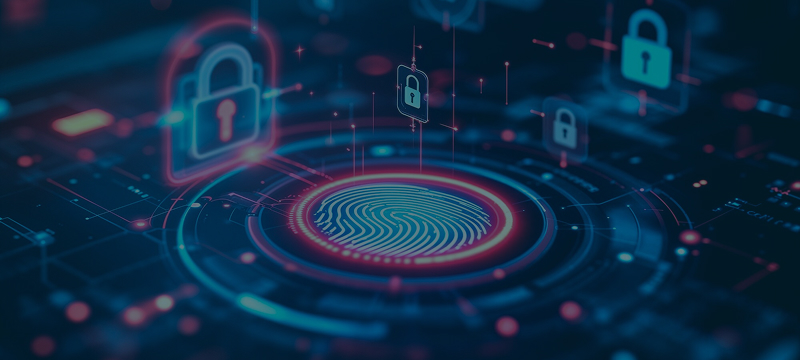
The RSA Conference 2025, set for April 28 to May 1 in San Francisco, is poised to tackle the pressing challenges shaping the future of cybersecurity. This year’s event will focus on pivotal topics, including: Real-world risk, highlighting the complexities of today’s threat landscape. AI-driven threats are redefining security strategies. Compliance limitations demand bold, innovative approaches. We spoke with seven leading voices in cybersecurity and business to better understand these trends. Their insights reveal the strategies businesses must prioritize to adapt and thrive in 2025’s fast-evolving environment. Building on these discussions, TrustNet is proud to return to the RSA stage. Chief Information Security Officer Trevor Horwitz and Chief Technology Officer Mike Kerem will lead the session “The Dark Side of SOC 2: Third-Party Risks Hiding in Plain Sight.” Attendees can expect actionable strategies, cutting-edge analysis, and fresh perspectives on tackling hidden vulnerabilities. Read on to explore these insights and prepare for what lies ahead. Cybersecurity Trends to Watch at This Year’s RSA Conference 1. AI Transforming Security Strategies The RSA Conference 2025 is shaping up to be a fascinating event, with some key trends and sessions worth paying attention to, especially for those of us interested in how cybersecurity is evolving. Artificial intelligence (AI) seems to be taking center stage this year, with over 40% of session proposals focusing on AI-related topics. That alone signals how rapidly AI is transforming both the threats we face and the tools we use to defend against them. Saddat says, “AI is becoming the double-edged sword of cybersecurity–it’s both the attacker’s weapon and the defender’s shield.” “This resonates with what’s being discussed at RSA. For example, sessions like “The Inevitable Collision Between 5G and Zero Trust” and “Expose and Disrupt: Build Your Attack Paths” dive into how AI is reshaping security strategies. These talks focus on using AI to predict and prevent attacks while also addressing vulnerabilities created by emerging technologies like 5G. Another interesting theme this year is identity security. With 80% of cyberattacks involving compromised credentials, it’s clear that securing identities–both human and non-human–is a top priority. Sessions like “2025 and Beyond: The Evolution of Identity-Centric Cybersecurity” highlight how multi-factor authentication and passwordless systems are becoming essential defenses. One session I’d personally keep an eye on is “Turning Breach Fails into Best Practices,” which examines how recent breaches could have been mitigated through better compliance and controls. It’s always insightful to learn from real-world examples, especially when they’re tied to practical solutions. From my perspective, the RSA Conference isn’t just about catching up on trends–it’s about understanding where the industry is headed. For example, the focus on microsegmentation in healthcare security or the rise of AI-driven phishing attacks shows how diverse the challenges are across sectors. These discussions remind us that cybersecurity isn’t just a technical issue; it’s about protecting people, data, and systems in a rapidly changing world.” Saddat Abid, CEO, Property Saviour 2. Zero-Trust Architecture and Internal Traffic Monitoring “Keeping an eye on the latest developments in zero-trust architecture is key this year. While zero-trust isn’t new, many companies still struggle with its implementation. The focus is shifting towards the practical application of zero-trust in hybrid environments, where cloud and on-premises systems intersect. It’s fascinating to see discussions around how to manage micro-segmentation effectively without creating an administrative nightmare. Too often, businesses overlook the importance of monitoring internal traffic. Employing tools to watch what’s already inside your network can catch anomalies early and prevent breaches before they escalate. Another trend catching my attention is autonomous threat detection using AI. The integration of machine learning to predict and respond to threats in real-time is moving from theoretical to practical in many businesses. Not enough organizations prioritize creating comprehensive data lakes for AI analysis, missing out on valuable insights. Building a robust dataset can better support AI models and help you spot threats that would otherwise slip by traditional methods. The takeaway here is to enhance your data collection strategies, ensuring your AI solutions have the rich data they need to be truly effective.” Matthew Franzyshen, Business Development Manager, Ascendant Technologies, Inc. 3. AI and Machine Learning in Cybersecurity “At this year’s RSA Conference, I’m paying close attention to how AI and machine learning are being applied to cybersecurity. These technologies are becoming crucial in detecting threats and automating responses. I’m also focusing on the evolving risks of cloud security. As businesses move more data online, the attack surface grows. Another area I’m watching is zero-trust security models. The shift from perimeter-based defenses to continuous authentication is gaining momentum. Finally, I’ll be looking for sessions on ransomware trends and emerging threat actor tactics. These attacks continue to be a major concern for businesses worldwide. My goal is to stay ahead of new techniques that could help organizations better defend against the increasing sophistication of cyber threats.” Mike Khorev, Managing Director, Nine Peaks Media 4. Intersection of AI and Cybersecurity “This year’s RSA Conference is packed with sessions focused on the intersection of AI and cybersecurity–particularly how generative AI is changing the threat landscape and reshaping defense strategies. Cyber resilience is another major theme, with keynotes diving into supply chain security, post-quantum cryptography, and zero trust evolution. Personally, I’m keeping a close eye on sessions around automated threat detection and AI-driven red teaming. The field is moving fast, and the conversations are finally shifting from hype to implementation–what’s working, what’s not, and where AI might be introducing more risk than it’s solving. Also worth watching: panels on cybersecurity governance for boards and the increasing regulatory pressure around incident disclosure. With SEC and global regulators tightening the rules, the strategy side of security is getting just as much attention as the technical. If you’re attending or tuning in virtually, the insights this year seem especially geared toward practical takeaways, not just high-level thought leadership–which is a good sign for how the industry is maturing.” Patric Edwards, Founder & Principal Software Architect, Cirrus Bridge 5. ERP Security and Blockchain Discussions “ERP security has been giving
Social Engineering Tactics & Prevention
Social engineering is one of the most cunning forms of cybersecurity manipulation. Instead of targeting systems or software vulnerabilities, it focuses on people, exploiting human behavior through psychological manipulation or deception. The end goal? Trick individuals into revealing sensitive information or granting unauthorized access, often without them even realizing the risk involved. Why does social engineering awareness matter? Social engineering attacks are becoming more common, affecting both individuals and organizations alike. These tactics are difficult to spot because they feel personal, relying on human behavior — not technology. Awareness is the first step to protecting yourself and strengthening your defenses. This article explains key terms and concepts, giving you the tools to recognize and prevent these increasingly sophisticated social engineering threats today. How Social Engineering Works Social engineering works when attackers follow a structured plan that includes key steps to manipulate their targets successfully. Reconnaissance: First, they gather information about the target. This could involve researching an organization’s employees or monitoring someone’s online activity. Trust-Building: Next, they create a sense of familiarity or authority. This might look like posing as a trusted colleague or a legitimate customer service representative. Manipulation: The attacker uses psychological tactics to push the target into action. Fear of losing access, urgency to fix a problem, curiosity about a too-good-to-be-true offer, or respect for authority often come into play. Execution: Finally, the attacker gets the target to reveal sensitive information or grant access, concluding the scheme. Understanding how these steps work can help individuals and organizations recognize red flags and secure their systems against such techniques. Learn more about our cybersecurity and compliance services. Contact our experts today. Talk to an Expert Common Types of Social Engineering Attacks Social engineering attacks come in many forms, each designed to exploit human behaviors and vulnerabilities. Here are some of the most common types, along with real-world tactics to watch out for: Phishing: One of the most widespread techniques. Attackers send fake emails or messages that look official, often tricking users into sharing passwords, financial details, or other sensitive information. Phishing examples might include emails claiming unusual login activity or requests from a “manager” for urgent action. Pretexting: This method is all about creating a believable story or scenario to gain trust. Attackers could impersonate a bank representative asking for verification details or an IT staff member requesting account credentials. Vishing/Smishing: These combine the power of voice and text. Vishing uses phone calls, often creating fear or urgency (“Your account has been compromised!”), while smishing relies on text messages to prompt actions like clicking harmful links. Baiting: This approach offers something tempting — like a free USB drive or access to exclusive content — but comes with hidden malware. Just plugging the device into your system or clicking the link starts the attack. You can easily spot red flags early and avoid falling prey to these deceptive techniques by understanding these common tactics. Advanced Tactics in Social Engineering While common social engineering attacks like phishing and baiting exploit general human vulnerabilities, threat actors are increasingly turning to more sophisticated tactics to manipulate individuals and access sensitive systems. Here are some advanced social engineering methods that organizations should be aware of: — Spear Phishing Unlike regular phishing, spear phishing is highly targeted and personalized. Attackers research their victims to craft convincing emails or messages that appear authentic. For example, a fraudster might pose as a trusted colleague or vendor, requesting sensitive information or payment. These targeted attacks often bypass generic security training due to their tailored nature. — Whaling A specialized form of phishing, whaling focuses on high-profile individuals such as executives or senior managers. These attacks exploit their authority or access to critical systems for maximum impact. A whaling attack might involve a forged email ostensibly from the CEO requesting a wire transfer for a “top-secret” deal. Due to the status of the target, these scams often yield substantial financial or informational gains. — Tailgating Also known as “piggybacking,” tailgating involves an attacker gaining physical access to restricted areas by exploiting social norms. For instance, a person might follow an employee into a secure building, pretending they forgot their access card. Once inside, the attacker can steal hardware, access unsecured terminals, or plant malicious devices. Physical security awareness is key to mitigating this threat. Case Study: 2016 DNC Phishing Attack Incident Summary: During the 2016 U.S. presidential election, the Democratic National Committee (DNC) fell victim to a spear phishing attack. Cybercriminals accessed sensitive emails and documents, triggering political fallout and reputational damage. Attack Method: Cybercriminals used highly targeted spear phishing emails. They tricked staff into entering credentials on a fake login page, granting unauthorized access to the DNC’s email systems. Why Social Engineering is Effective Social engineering is highly effective because it takes advantage of natural human tendencies. Attackers rely on psychological manipulation rather than technical exploits, making these tactics harder to detect and defend against. Here’s why this method works so well: Exploitation of Trust: Attackers pose as credible figures, such as a manager or IT staff, to create a sense of authority and reliability. Leverage of Emotional Responses: Fear and urgency are often used to pressure quick decisions, while curiosity or helpfulness might lure individuals into unintended actions. Human Error in Cybersecurity: Even well-trained individuals can make mistakes when under pressure or when emotions are triggered. This human element creates openings for trust exploitation. Because these psychological cyber attacks bypass technical systems and go straight for human vulnerabilities, detecting them in real time can be incredibly challenging. How to Prevent Social Engineering Attacks Preventing social engineering attacks starts with building awareness and adopting proactive defenses. Here are key steps to bolster your social engineering defense: Stay Skeptical: Always question unsolicited requests for information, especially if they seem urgent or unusual. Verify the requestor’s identity through official channels before taking action. Cybersecurity Awareness Training: Regularly educate employees about common attack tactics, such as phishing, pretexting, and baiting. Training programs empower teams to recognize warning signs and respond appropriately. Use Multi-Factor Authentication (MFA): Adding an extra layer of security makes it harder


